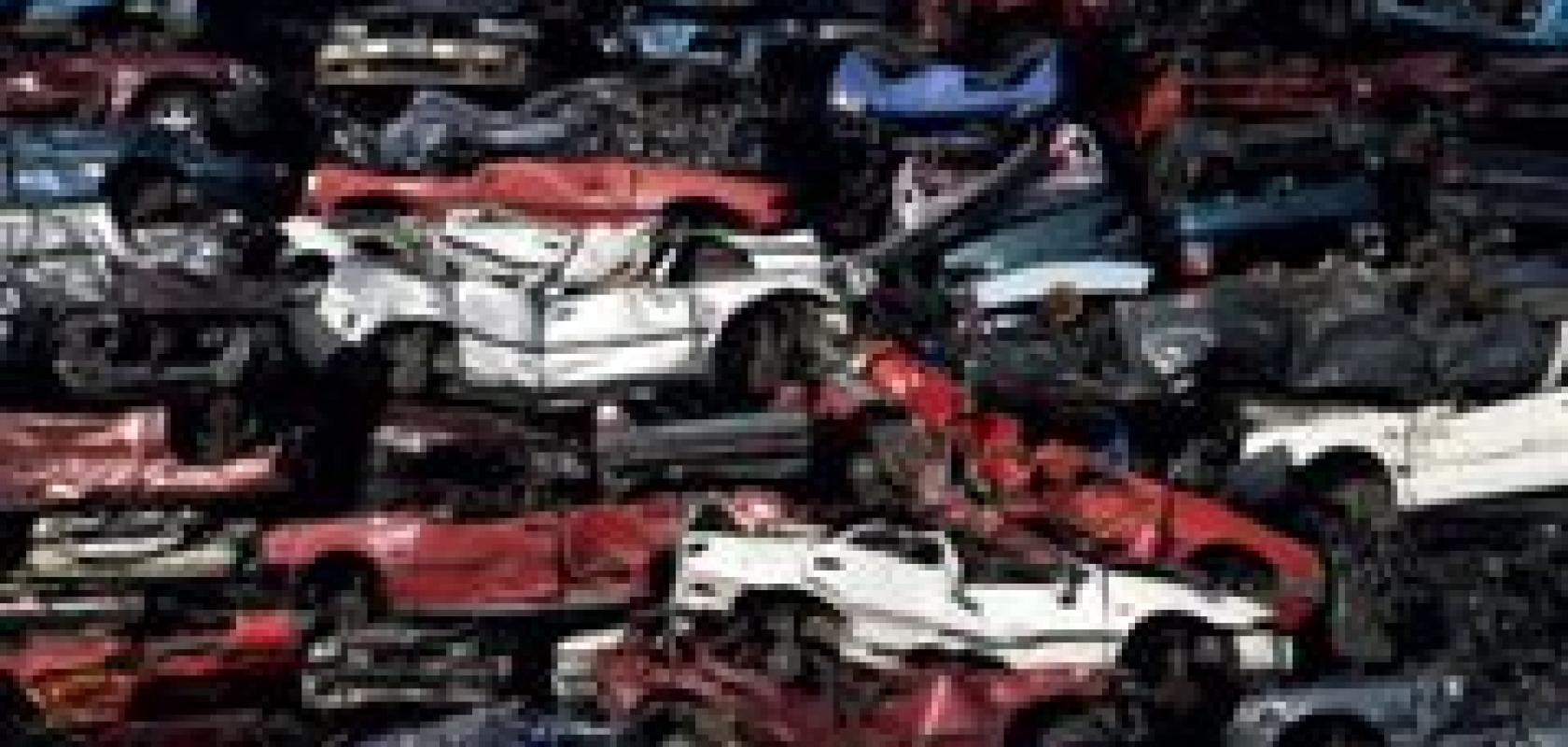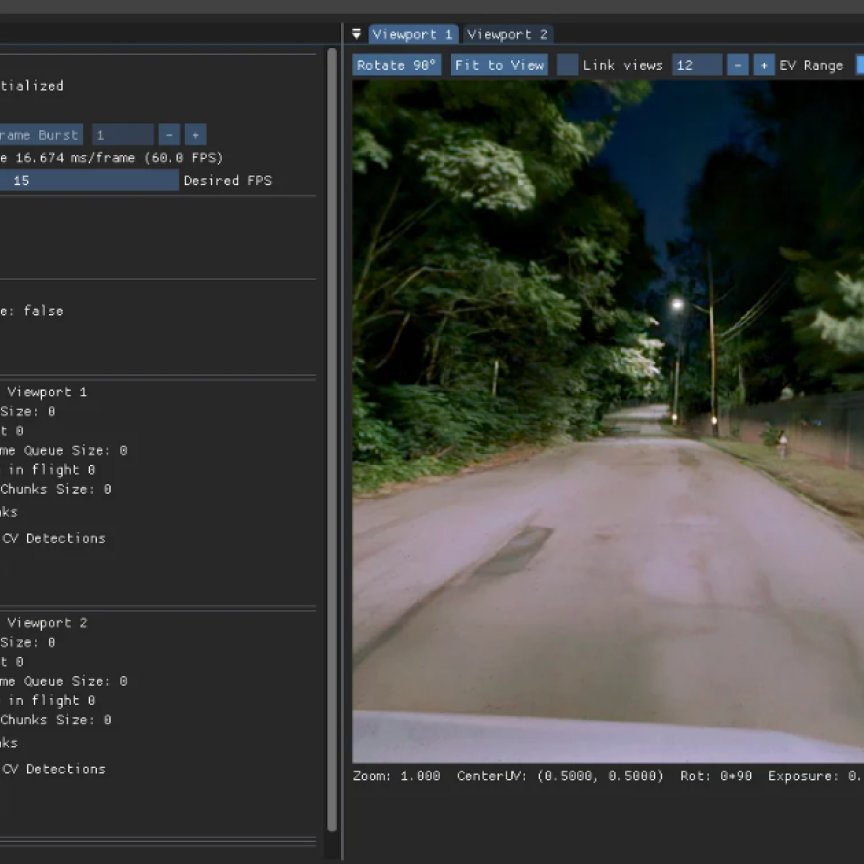Heavy industry’s factories are complex places that can be dangerous to work in and machine vision and imaging systems have had their place for many years in improving quality, productivity and safety.
At Silver City Aluminum, products are manufactured with the process starting with large rolls of aluminium, called billets, which are fed into an extrusion machine, pressed into a die and heated. They emerge as a slat, blind, or other shaped aluminium product. The problem the Silver City Aluminum engineers had to tackle with a vision system is excess material being left still attached to the billet, which can damage machinery further down the production process.
After the billet has been pressed into the die and heated for about a minute, a knife drops down, guillotine-style, and shaves off the excess 3 to 4 inches of aluminium. Occasionally, after a billet has been cut, the excess material fails to fall off. When this hanging piece of aluminium hits the die, it can destroy it causing about $10,000 worth of damage in replacement costs. Such an event can also cause the machine to shut down, leading to expensive production losses.
Existing photoelectric sensor solutions were not performing well enough to detect the excess material so the firm’s engineers contacted CPU Automation, based in Tyngsboro, Massachusetts. The company installed a dual-camera inspection system using the Boa smart camera from fellow Massachusetts company Teledyne Dalsa. Incorporating all the elements of an industrial machine vision system within a smart camera package, the Boa is an optical inspection tool for controlling quality.
In the inspection system, one Boa camera monitors the billet as it is loaded into the press to ensure that it enters the extruder properly. As the press is located directly in front of a large window, infrared lights are used to help reduce glare and reflections allowing a clearer view of the billet and preventing harm to workers’ eyes. A second Boa camera takes images of the knife as it drops to cut the billet and when it returns to its original position. If the image indicates that the excess aluminium was sheared off then the hydraulic press and plunger resume operations. If the image shows that the billet was not cut cleanly, the Boa sends a message to a programmable logic controller that stops the machine and activates an alarm alerting workers to the problem. Since the system has been up and running, Silver City Aluminum has not damaged a die or experienced any machine downtime.
This Boa system can also be connected to a PC, allowing the user to control the cameras from their desk. Since the software is built directly into the camera, the PC can be used to program the Boa through a web interface. ‘Any programming and re-programming is done from my desktop. It’s really easy to use this system,’ comments CPU Automation engineer, Mike Bray.
The Boa software contains an extensive library of tools for solving most vision applications. At Silver City, a simple pattern matching technique is used. ‘We look at a clean cut and teach the system to run that specific pattern,’ says Bray. ‘The image gets a score of 100 per cent if it’s an exact match, then the score drops with any variations. Any big fluctuations that occur, say down to 20 per cent, causes the Boa to alert the PLC to a failure.’
Welding car body parts
Some of Silver City’s aluminium billets will end up as car parts that are welded together. In recent years, heat flow, or active thermography, has been established as an effective procedure for non-contact and non-destructive testing to detect joining errors as well as the localisation of hidden defects in weld seams. The fields of application range from quality control for bonding, welding, soldering and other joining procedures. Techniques such as shrink-hole detection can be used for parts of the car interior or the identification of material defects in composites and flaws in metals.

Thermal cameras are being used to test the strength of welds in automotive workshops. Credit: InfraTec
Firstly, a targeted thermal or cold pulse is directed into the test object. The chronological and local process of the heat flow inside the test object depends on its geometry and thermal characteristics. Accordingly, this process leads to a temperature distribution on the surface of the test object which, subsequently, is imaged by a thermography camera. Afterwards, the captured thermal images are analysed with special software, evaluated according to test criteria and processed into a resulting false-colour image. As an imaging procedure, active thermography enables fast detection of flaws and simple documentation of the test results.
Because process irregularities can be identified and located early in production, the reject rate can been minimised thanks to this non-destructive testing of laser welded seams using infrared thermography. As such, active thermography is used in various production technologies in both offline and inline testing in serial production.
An automated, turn-key system for non-destructive testing of bodywork parts, developed with the cooperation of InfraTec, was put into serial production by a well-known automotive manufacturer whose name has not been disclosed. The system controls the quality of laser weld seams of single bodywork components through using active thermography.
For the testing, the component is fixed between two linked robots that target an industrial flash lamp or a thermography camera onto the tested weld seam. A thermal pulse is directed into the tested laser weld seam through a defined release of the high-energy industrial flash and the resulting heat flow and its time-based progress are photographed as a sequence of thermal images by a supersensitive high-speed thermography camera.
Any flaws or defects in the weld seam will lead to a change in the heat flow and, therefore, to irregular temperature distribution on the component’s surface. As well as an increase in testing reliability, the procedure leads, at the same time, to a significantly shorter testing period and lower costs compared to destructive testing. All in all, both the quality and the overall performance of production are increased.
Software developed by InfraTec analyses the saved thermal image sequence and allows the visualisation of the measurement results. The analyst obtains detailed information on the state of the weld seams and is able to take quality assurance actions. The test software also allows 100 per cent documentation of the testing results and the tester’s actions and can be parameterised individually for each testing authority.
Stena Gotthard Fragmentering in Sweden is in the business of shredding large metal products whose usefulness has come to an end. Fragmentering specialises in processing light to medium-heavy mixed scrap, such as cars and household appliances. Shredding might not seem like an operation that requires in-process control but Flir’s cameras are being used to do just that.
A shredder crushes the material into small chips. These chips are then sorted into three different categories – iron, non-magnetic metals, and organic materials – and sold for recycling. The heart of the installation is the turning crusher, which crushes the scrap materials that are continuously loaded into the feeder. A huge 2.5MW motor powers the crusher. Due to the high friction that occurs during the fragmentation process, a lot of dust, but also a great deal of heat is generated. Water is sprayed onto the crusher for reducing the dust, but results in large quantities of steam being produced. The processing of some materials can also produce smoke. By using an infrared camera, operating in the 8-12μm spectral region, the operator is able to see through the smoke and steam.
Three Flir Systems ThermoVision infrared cameras are being used to monitor the process. As a result, output at the installation has increased by more than 10 per cent. ‘We now process approximately 1,000 tonnes of scrap per shift, which is outstanding for our installation. This output would have been impossible without the IR camera,’ says Håkan Norén, technical supervisor at Stena.
A Flir ThermoVision camera gives the operator a real-time image showing exactly what is going on inside the feeder as it loads scrap into the shredder. In the control room, an operator manually controls the feeder to stop it from becoming choked. In the past, normal visual cameras were used to monitor the feeder. However, due to the smoke and steam, such cameras produced very poor image quality.
‘Before, I had to rely on an amp-meter to measure the electric current of the crusher and to indicate when something was choking the feeder,’ says Ola Kilestad, one of the shredder operators at Stena. At Stena Gotthard, the shredder operator can now view the IR image on the display in front of him while controlling the feeder with a joystick. ‘Thanks to the infrared camera, I can now see what is blocking the feeder through the smoke and take the appropriate action immediately,’ Kilestad adds.
A problem for the vision system is fragments of scrap being propelled at high, bullet-like velocity. In response, a local company, Informationssystem, built a protective enclosure furnished with a 25mm-thick, steel plate, which is further protected by a shock absorbing metal net. An air purger is connected to the enclosure to prevent dust from contaminating the camera optics. Three more shredder installations in Scandinavia have installed Flir Systems IR cameras. Convinced of the rapid return on investment, shredders at various locations have been showing interest in equipping their installations with infrared cameras.


